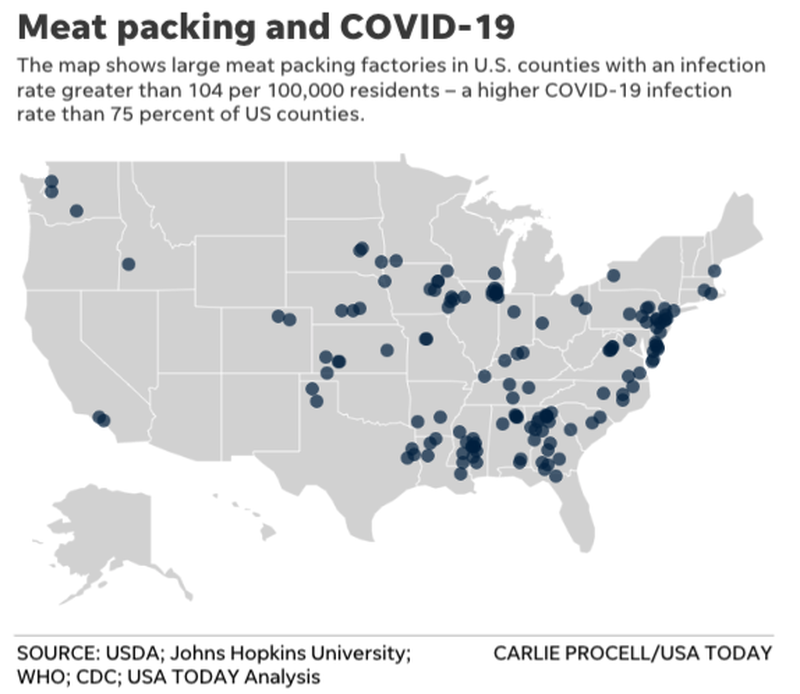We have warned that a rash of COVID-19 outbreaks at dozens of meatpacking plants across the country has quickly transformed into a crisis. Around 150 of these facilities operate within counties where virus cases and deaths are exceptionally high.
An outbreak of the virus has been reported at many of these processing plants, resulting in the closure of at least eight major ones in the last two weeks.
Every virus-related meat processing plant closure reduces the ability of local farmers to sell their animals at the market, now is leading to herd overcapacity at farms and resulting in hundreds of thousands of hogs that are about to be culled.
We noted on Thursday (April 23) that the latest closure of processing plants has shifted at least 15% of US’ hog-slaughtering capacity offline. Farmers in Minnesota are preparing to cull upwards of 200,000 pigs by the first or second week of May.
Rick Bergmann, chair of the Canadian Pork Council, said eastern Canadian farmers are preparing to euthanize hogs that were once set for slaughter. He said farmers are running out of room to store animals.
“This is an unacceptable situation and something must be done,” Bergmann told Bloomberg.
A culling wave of hogs across North America is about to be unleashed thanks to the closure of processing plants due to virus outbreaks at specific facilities. This has weighed on spot livestock prices while wholesale prices have surged.
“Hogs are the latest commodity that’s seeing supplies potentially go to waste as farmers in the US and Canada lose money, with nowhere to sell their animals. Dairy farmers are spilling milk that can’t be sold to processors, broiler operations have been breaking eggs to reduce supplies and some fruit and vegetables are rotting in fields amid labor and distribution disruptions,” Bloomberg notes.
Even before the pandemic, and mostly because of the trade war, demand for 40-pound feeder pigs has plunged since 1Q19.
The Canadian Pork Council said farmers are losing between $21 to $35 per hog. Backlogs for hog slaughter stands at 92,000 last Friday.
Western Canadian farmers who generally sell baby pigs to US processing plants have been unable to do so this month. He said the shutdowns are creating huge backlogs for animals to move through the system.
Canadian farmers are hoping for a government bailout of at least $20 per head.
“It’s backlogging and we’re fearful the problem is going to get worse,” Bergmann said.
David Preisler, CEO at the Minnesota Pork Producers Association, said backlogs and overcapacity at farms due to processing reduction had forced some farmers to cull mature hogs.
“Farmers are starting to run out of options with what to do with market-ready pigs,” he said in a telephone interview. “There are other pigs that have been born that need to get into that barn space.”
Steve Meyer, an economist at consultant Kerns & Associates, said hog farmers don’t have extra pens and feed yards, that is why many of them are starting to cull herds. He said overcapacity is everywhere in the farming industry and resulted in the dumping of products:
“Nobody wants to do this,” Meyer said. “It’s not as easy as dumping milk on the ground like the dairy guys do. It’s not as easy as breaking eggs in a broiler operation and eight weeks later having fewer birds on the market. We have a 10 month chain from the time until the pigs hit the market.”
Food shortages could occur “two weeks from now in the retail outlets,” warned Dennis Smith, a senior account executive at Archer Financial Services.
By now, it should be obvious the evolution of the virus crisis could trigger food shortages across the country at a time when an economic depression is unfolding with 26 million people out of work in five weeks. This all means the unraveling of social fabric is ahead.

